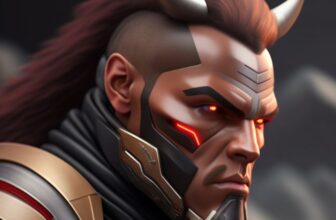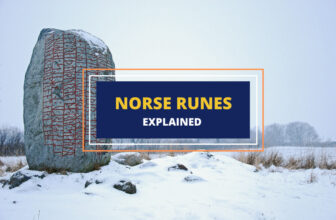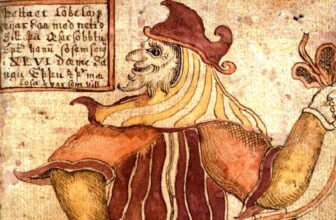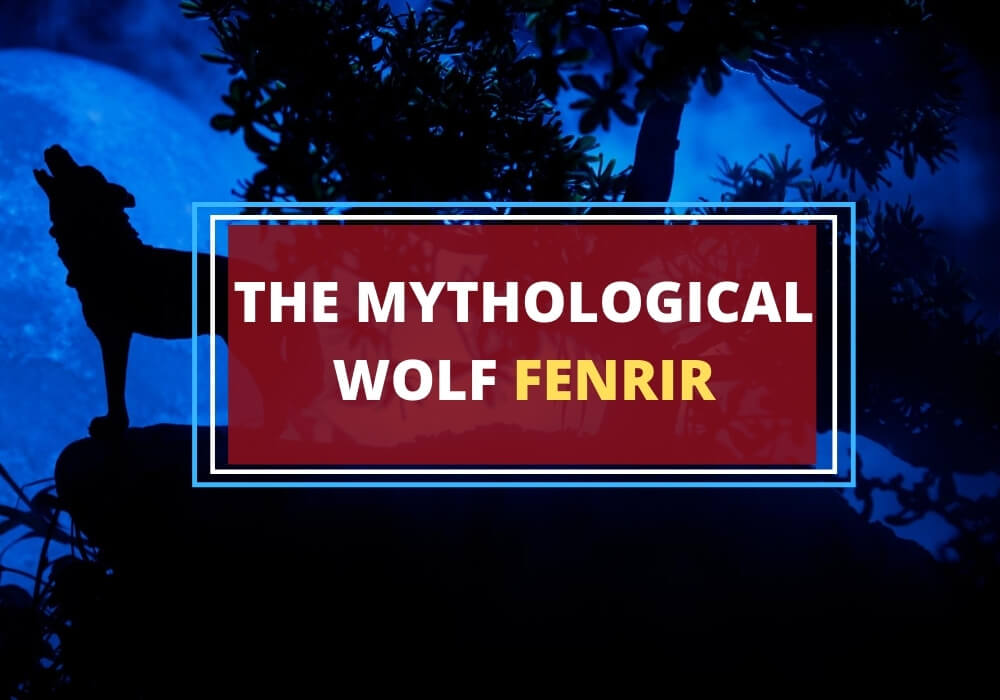
Table of Contents
Fenrir is one of the most famous mythological wolves in the world and has been the inspiration behind the creation of many other fictional wolf and hound characters. It remains one of the most important elements of Norse mythology. Here’s why.
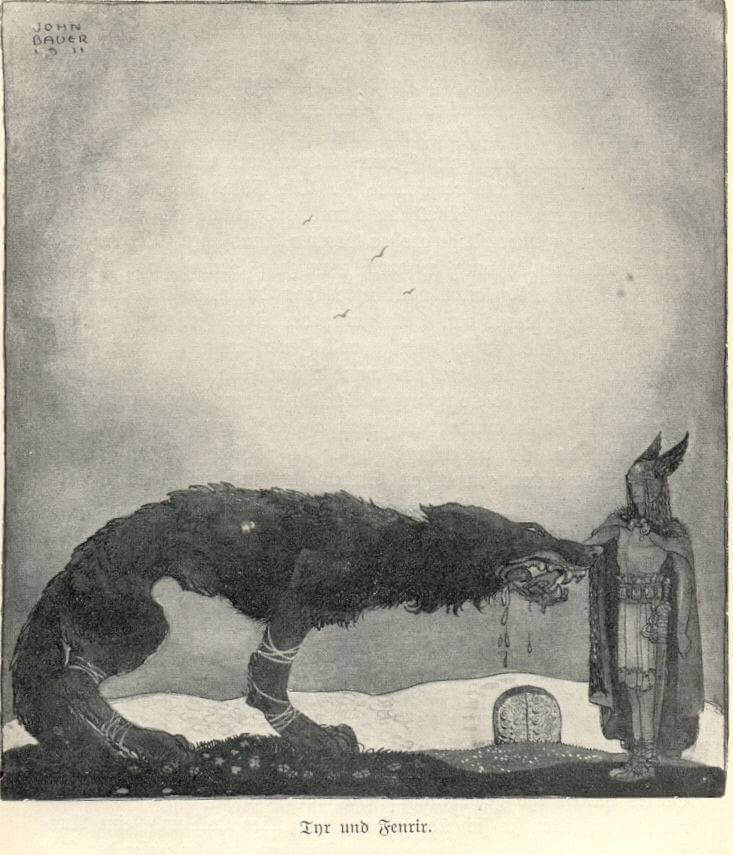
What is Fenrir?
In Norse mythology, Fenrir is the son of the god Loki and the giantess Angrboða. His siblings are the world serpent, Jörmungandr, and the goddess Hel. All three of them were prophecized to help bring the end of the world, Ragnarok. While Jörmungandr’s role was to start Ragnarok and then battle Thor, Fenrir was the one who would kill the All-Father god, Odin.
The name Fenrir comes from Old Norse, meaning a fen-dweller. Fenrisúlfr was also used as it meant Fenrir’s wolf or Fenris-wolf. Other names for the monster were Hróðvitnir or fame-wolf, and Vánagandr which meant monster of the [River] Ván.
Origin and Story of Fenrir
Fenrir is best known through the myths and legends described in the 13th and 14th century work Prose Edda by Snorri Sturluson. In some of these legends, it’s stated that he had fathered the wolves, Sköll and Hati Hróðvitnisson, while other sources imply that these two are just other names for Fenrir himself.
In all legends, Fenrir was prophecized to kill Odin during Ragnarok and then be killed himself by Odin’s son Víðarr. All this wasn’t meant to happen just because Fenrir is evil, or just because it was written that way. Like most prophecies in Norse mythology, this one was self-fulfilling.
Because the gods themselves also knew the myth of Ragnarok, they knew Fenrir’s role in it from before the wolf was born. So, when Fenrir, Jörmungandr, and Hel were born, the gods took steps to avoid their role in Ragnarok.
- Jörmungandr was tossed in the great ocean that encircled Midgard
- Hel was brought to Niflheim where she would be the goddess of the Underworld
- Surprisingly, Fenrir was raised by the gods themselves. He was kept away from Loki, however, and was instead entrusted to the god Týr – son of Odin and the god of law and war, Týr was similar to the ancient Greek god, Ares.
Týr was supposed to “keep Fenrir in check” and the two became good friends. Once the wolf started getting dangerously large, however, Odin decided that more drastic measures would be needed and Fenrir would have to be chained.
To chain the giant wolf the gods tried three different bindings.
- First, they brought the binding called Leyding and lied to Fenrir that they just want to test if he was strong enough to break it. The wolf broke Leyding with no effort, so a second binding was devised.
- Dromi was a much stronger binding and the gods promised Fenrir great fame and fortune if he could break through it. This time the wolf struggled a little, but broke Dromi as well. Truly scared this time, the gods decided that they’d need a special type of binding for the giant monster.
- Gleipnir was the third binding and it was peculiar, to say the least. It was crafted from the following “ingredients”:
- The roots of a mountain
- The spittle of a bird
- The beard of a woman
- The sound of a cat’s footfall
- The sinews of a bear
- The breath of a fish
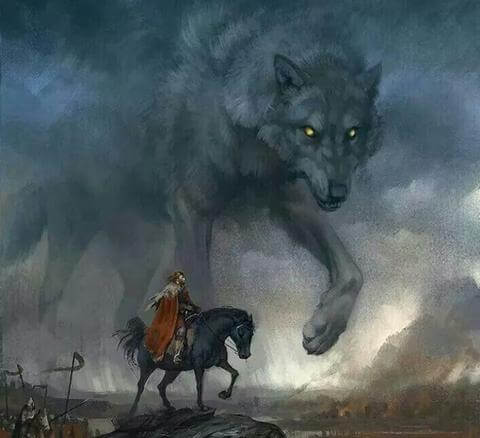
Gleipnir is famous as one of the strongest binds in Norse mythology and yet, it looked like a tiny ribbon. Fenrir realized that Gleipnir was special when he saw it, so he told the gods:
“If you bind me so that I am unable to release myself, then you will be standing by in such a way that I should have to wait a long time before I got any help from you. I am reluctant to have this band put on me. But rather than that you question my courage, let someone put his hand in my mouth as a pledge that this is done in good faith.”
The gods accepted his pledge and Týr placed his hand inside the wolf’s mouth. Once Fenrir was bound with Gleipnir and couldn’t get free, he realized he was tricked and bit Týr’s arm off. Fenrir was later bound to the rock Gjoll where he would stay bound until Ragnarok, when he’d eventually get free.
What Does Fenrir Symbolize?
Despite its role as Odin’s killer and bringer of Ragnarok, Fenrir wasn’t viewed as strictly evil in Norse mythology. As is typical for their legends, the Germanic and Scandinavian Norse people viewed characters like Fenrir and Jörmungandr as inevitable and as a part of the natural order of life. Ragnarok wasn’t just the end of the world either, but an end of a cycle, after which history would repeat itself again and again.
So, while Fenrir was feared and was used as the basis of many evil wolf characters in later literature and cultural works, in Norse mythology he was a symbol of strength, ferocity, destiny, and inevitability.
He was often viewed as someone wrongfully chained in an attempt to prevent the fulfillment of his destiny. So, while Fenrir taking his revenge on Odin was tragic and fearsome, in a way, it was also viewed as just.
Because of this, Fenrir is often viewed as symbolizing:
- Justice
- Vengeance
- Ferocity
- Power
- Strength
- Destiny
- Inevitability
- Following one’s true path
- Fearlessness
Fenrir In Art And Modern Culture
As a symbol, Fenrir has been depicted in many different artistic ways. His most famous depictions are either as a wolf breaking his chains or as a giant wolf killing a soldier, usually believed to be Odin.
Some of the most famous archeological findings that depict Fenrir include Thorwald’s cross where he’s shown killing Odin, Gosforth Cross which depicts Ragnarok, Ledberg stone where the beast also devours Odin.
Of course, Fenrir is also one of the most influential Norse figures in terms of his influence over other literary works. Many of the classic and modern fantasy works of the 20th and 21st centuries include variations of Fenrir.
- Tolkien had the wolf Carcharoth which is clearly influenced by Fenrir.
- C.S. Lewis had the wolf Fenris Ulf or Maugrim which is directly named after the mythical beast.
- In Harry Potter, J.K. Rowling also had the Fenrir Greyback which too was directly named after the Norse Fenrir.
- Fenrir also features in video games, such as Final Fantasy.
Fenrir in Jewelry and Fashion
Today, Fenrir is often used as a symbol in clothing and jewelry, as an amulet, to showcase cultural pride or simply as a symbol of strength and power.
The image of the wolf is often stylized in a variety of ways, and used in pendants, bracelets and amulets. They tend to have a masculine feel and are ideal for a statement design.
Wrapping Up
Fenrir remains one of the most important and influential characters of Norse mythology, prevalent in popular culture today. While the symbol of the wolf isn’t limited to Nordic culture (think the she-wolf of Rome), Fenrir is undoubtedly the strongest and most powerful wolf of all.




